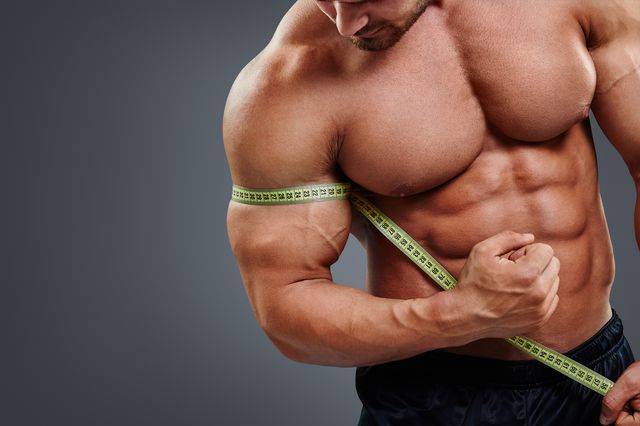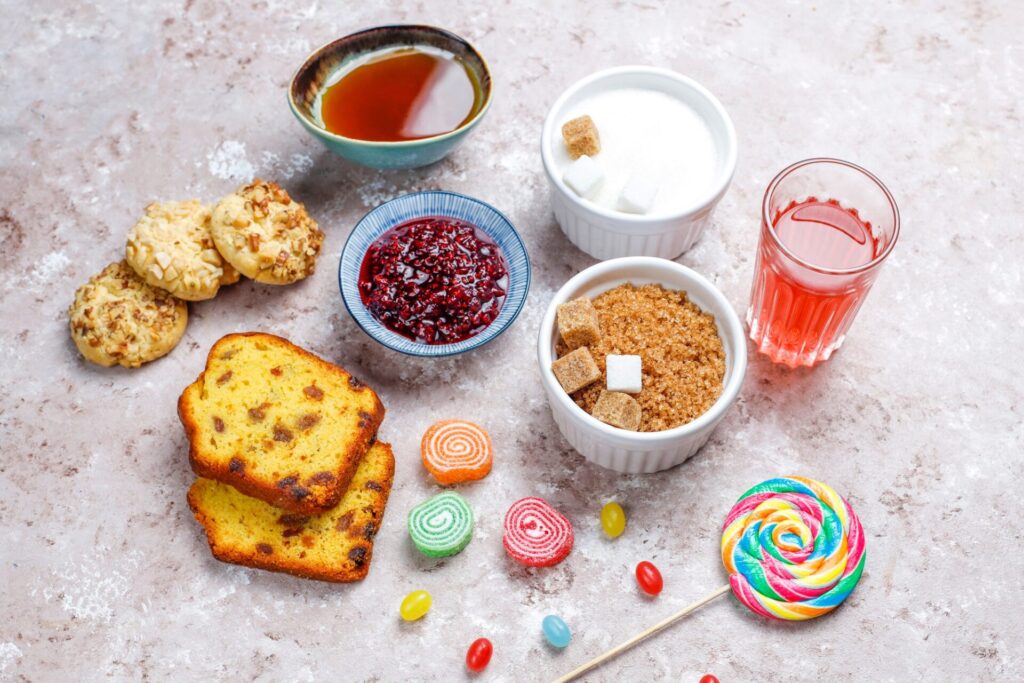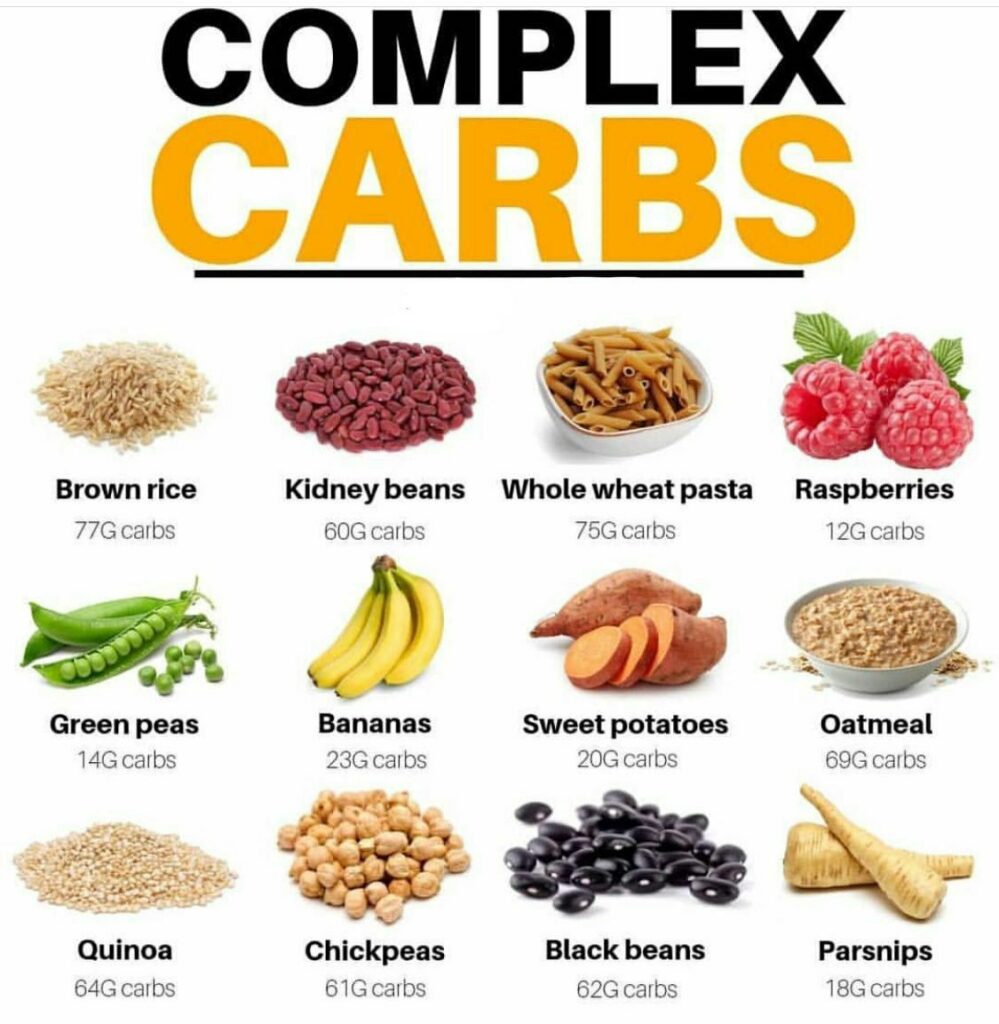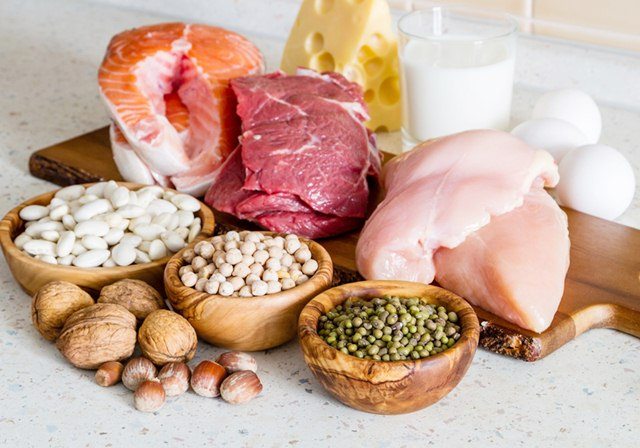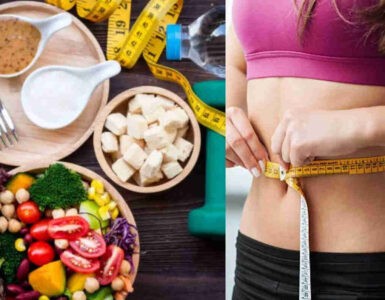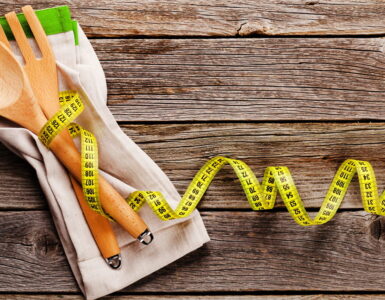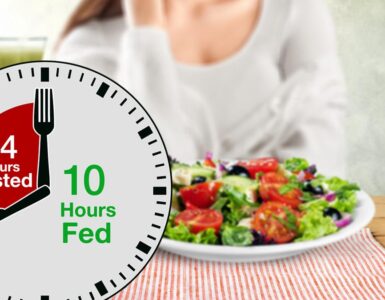Swole, Gym Rat, Diesel, Jacked, Pumped – the nicknames look funny; however, the people behind are nothing but inner force packed into a strong and attractive body. A muscular body is not only about beauty; it’s a sign of health and strength. Muscle building isn’t only about hitting the gym regularly; it’s not possible to make it without an adequately elaborated meal plan for muscle gain. Our article will explain how to plan your diet in order to reach your ‘bulking’ goal. Let’s get an insight together.
Page Contents
How Does Your Body Build Muscle?
Skeletal muscles make up30 to 40% of your total body mass. They connect to your bones and make you capable of moving and doing all the range of activities and motor skills. Skeletal muscles are controlled voluntarily – when you want and need it; unlike heart muscles, for example.
The percentage of muscle mass can vary from person to person – men have about 36% more muscle mass than women, as well as those who are tall or overweight. Muscle mass decreases with age in both men and women. [1]
The muscles contract when they receive signals from motor neurons. The better you become at having those signals, the stronger you can get. When a powerlifter lifts heavy weight despite not being very muscular, -they can activate motor neurons and contract their muscles better.
Muscle-building stages
When it comes down to muscle growth, everything is quite simple and can be divided into the following stages.
1. Warm-up – your heart pumps blood to your muscles, fully extending while being warmed and supplying the muscle fibers with oxygen to make them ready for a workout.
2. Muscle loading – during the workout, the muscles are being loaded and stretched. As a result, the heart pumps more blood, oxygen, and nutrients to these fibers.
3. Nervous system participation – when we need to lift weights, the central nervous system (CNS) sends signals to nerves around those muscle fibers – fiber tissue contracts, and you lift the weight. When you do the exercise correctly, the muscles get activated in a particular sequence, and your nervous system adapts. With more efficient adaptation, you can lift more weight and do more repetitions.
4. Chemical reactions – the source of immediate energy used for muscle contractions is adenosine triphosphate (ATP). The creatine, phosphate, and glycogen stores are also broken down into ATP. The byproduct of this process is lactic acid.
5. The burn – when your glycogen stores are depleted, and the lactic acid is built up instead, you can’t work effectively and need rest.
6. Energy failure – with the last set of repetitions out, muscle tissue is tired and has microscopic ‘tears” in the tiniest muscle fiber bundles – myofilaments).
7. Repair and growth – after-workout time is firstly used for repair. The body fixes the microtears by adding amino acids to the myofilament, making them grow in size. However, muscle growth is limited by the number of muscle cells.
How Many Calories Do You Need To Build Muscle?
What you eat is just as important as working out when attempting to build muscle mass. Not only do you need calories to provide essential functions for your body, but you also need more fuel to help generate new muscle mass. An average male athlete can maintain weight at around 18 calories per pound of bodyweight.
Your weight and fat/muscle tissue are relatively constant when you consume the same number of calories. However, for muscle gain, you need a safe surplus. A safe increase is 3500 calories per week (approximately), depending on your activity level, which is 500 calories daily.
You may start consuming extra 250 – 500 calories per day, depending on how you gain weight. If it’s easy to gain weight for you – keep to the lower limit; if it’s difficult to gain weight – keep to the end of the range. It takes time to find the right amount of additional calories to build muscle and stay lean.
Such a steady approach will guarantee the gain of lean muscle mass and keep the fat down. The result will be about 1 pound of muscle gained a week. Be ready for a minimal fat accumulation; it’s not muscle dry. A 1-2 pounds a week will make 75% muscle and 25% fat.
Most people gain a few pounds of muscle per month. To build muscle, you needn’t add too many calories to the menu; you can have a small, consistent surplus raised every few weeks based on your optimal results. You may strive for better and faster muscle gain; however, this process takes time and effort.
How to measure muscle gain?
Your scales can only show the higher total weight, which tells you nothing about muscle tissue. You need to measure your body fat percentage every 4-6 weeks along with chest, arms, or waist measurements.
There’s a diversity of fat tests, but the most important is to stick to the same type throughout the process: the measures can differ, o you will not make a clear picture.
Bulking Phase
Bulking is a muscle-building phase involving calorie surplus and lifting weights [2]. It consists of two stages – bulking and cutting.
- Bulking. During a bulking phase, athletes typically consume additional carbs and protein to maintain a calorie surplus to build muscle. It’s essential to include strength training to stimulate muscle growth. Bulking increases muscle mass and body fat.
- Cutting. Cutting involves creating a calorie deficit to lose body fat from the bulking phase. Strength training is also vital to minimize muscle loss. Some people stick to the maintenance phase – consuming enough calories to maintain the same body composition.
What’s The Ideal Macro Ratio For Gaining Muscle?
When muscle mass is involved, people consider protein the primary and only energy source; however, this is a big misunderstanding. Let’s clarify how the energy is created and spent – the whole cycle.
All the calories we consume are turned into energy which is a provider of our functionality. If there’s more than we need now, it’s turned into fat for future use. And the source doesn’t come solely from extra fat or carbs. Protein in excess will have the same effect.
Our body keeps and saves fat for a rainy day and doesn’t want to give it away easily. If you experience a shortage of calorie intake, however, the body begins to break down fat to obtain the amount of energy needed. If you consistently create a calorie deficit, your will start burning fat.
Fewer calories contribute to fat loss; however, eating more is not a key to muscle gain. On the contrary, muscle tissue growth is provided by the right combination of calories and regular body composition exercises. Regular strength-building workouts damage and rebuild muscle fibers in order to make them firmer and tighter.
By balancing the right number of calories and exercising, you can reach fat loss and muscle gain in one fell swoop.
Important things to remember:
- 1 – 1.5 grams of protein per pound of your body weight – 25-30 grams of protein (6-8 oz) for a meal. Include proteins like beef, salmon, turkey, chicken, eggs, etc.
- The optimal carbohydrate intake is around 150 to 250 grams daily. Opt for complex carbs like sweet potatoes, brown rice, oats, beans, and quinoa. They give you a steady rise in energy rather than short-term spikes.
- Simple carbs can be added for pre-or post-workout nutrition for quick muscle recovery. However, don’t abuse them – extra sugar will take its toll sooner or later on your pancreas.
- Healthy fats may vary between 65 to 85 grams a day. Go for avocados, natural butters, coconut oil, extra virgin olive oil, and egg yolks. Natural fats are used as fuel and nutrient sources, while artificial ones just get stored. A healthy diet is always a better choice.
- Don’t skip fruit and vegetables, as they are rich in fiber, maintaining intestinal health and functioning.
What To Eat On The Bodybuilding Diet
A bodybuilding or bulking diet isn’t about eating more. It needs to replenish your storage of macronutrients and vitamins. Therefore, give it a proper thought while planning.
A typical macro breakdown for fat loss and muscle gain is 40 percent protein, 30 percent fat, and 30 percent carbs. How do they impact muscle gain?
Carbohydrates
Carbohydrates, despite being quite defamed by the ‘super-healthy-and-quick-diets’ followers, make the third part of the essential nutrients. Carbs give us glucose which is turned into energy and stored to be readily available for usage. This form of energy is called glycogen. If there’s no glycogen available, any workout will seem even more difficult. You can’t start a car with an empty tank; why do you think your body can? Carbohydrates top off the energy (glycogen) stores, giving you strength for more intense sessions.
We advise you to read the article “No carbs diet plan for 2 weeks”.
When glycogen stores are low, you will have a hard time working out, not to mention the failure of results. Adequate glycogen level is what supports muscle recovery. Going low on carbs may limit the body’s ability to use the protein. [3]
The main reason why carbs fell out of grace is low awareness about the issue. Not all carbs are the same. We can divide them into 2 main groups: simple/quick carbs and slow/complex carbs. Let’s get a bit into the topic.
Simple carbohydrates, or quick, are easily broken down by the body, giving you a rapid energy spike. You feel better, function better and start thinking faster. However, the biggest problem is the short-term effect. After about an hour, you will feel strengthless again and need another dose of energy. And such energy refills may continue throughout the day. Quick carbs are helpful when you need the fuel immediately. However, if you consume them a lot and the energy isn’t spent, everything is turned into fat stores. Quick carbs are highly-caloric; however, they lack nutrients, vitamins, and microelements. Besides, they raise insulin levels, which is the reason for less stable blood sugar levels and food cravings. Not all the simple carbs are evil, mainly those having added sugar, flour, and trans-fats.
Complex carbohydrates, or slow, behave differently. They take a longer time to digest and provide energy longer. Moreover, complex carbs are higher in nutrients and a better nutrition source. They are high in fiber, providing intestinal functionality and health. As you get the energy slower, you have less desire to snack or chew something because you have the energy coming.
Best carbs for muscle growth
When you get engaged in working out and muscle gaining process, opt for the following healthy and nutritious carbs for your meal plan
- Fruits and vegetables
- Sweet potato
- Legumes – despite being considered a highly-protein product, they are high in complex carbs.
- Nuts and seeds (peanut butter, hazelnuts, almond butter, etc.)
- Oats, quinoa.
- Whole wheat bread and pasta
It’s unnecessary to eliminate all the simple carbs like cakes, pies, biscuits, and sweets. YOu can have a cheat day once or twice a month. You probably know how it works – the forbidden fruit is always the sweetest.
Protein
Protein is always a hero, compared to carbs and fats. We need it in large quantities – it’s a building block of our body, delivering all the essential amino acids. Amino acids are used for protein synthesis, helping to maintain and repair the muscles after the training.
If your target is muscle gain, the protein intake must be higher than its expenditure. The daily recommended intake is 1 – 1.5 grams of protein per pound. However, the numbers may vary depending on your body complexion and training intensity.
When building muscle, your meal plan requires 40% of protein intake. However, maintaining muscle mass requires less.
Aim for lean meat – chicken breast, turkey, fish, eggs, low-fat cottage cheese, beans, and seeds to provide quality energy sources.
Vegetables
Vegetables are highly beneficial for our physical health. Greens such as spinach, broccoli, asparagus, etc. help us build muscle strength. Moreover, they are rich in vitamin microelements, enhancing our health.
Starchy vegetables can also be the source of complex carbs: sweet potato, potato, corn, and even peas.
Vegetables deserve to be on your meal plan. Potato is a good vegetable, don’t buy the media claims.
Fibre
Fiber is another essential nutrient. It helps to get rid of the waste byproducts of muscle production. If the waste is held up inside, it may lead to the deterioration of health in general. When the waste is not eliminated, it causes biochemical stress on the body, which decreases the levels of hormones needed for muscle growth.
That’s the reason why athletes and bodybuilders follow a high-fiber diet. For every 100 calories on the meal plan, 1 gram of fiber should be included. A 3000 calories regimen should contain 30 to 60 grams of fiber daily.
Healthy Fats
As a rule, fat should make up 20 to 35% of calorie intake. While building muscle mass, add to your menu fatty types of fish, nuts, vegetable oils, and avocado. They are all quality sources of fat and protein, providing amino acids and nutrients.
The amount of fats is quite individual and depends on your primary aim and body complexion.
Muscle-Building Supplements
What you eat is just as important as working out in the gym; however, due to some reasons, we may not meet the requirements for the nutrients and vitamins. That’s when the supplements come in handy – they help you fill the gaps in nutrition. Protein powder can be an excellent addition to your diet if you struggle to meet the requirements for muscle gain or lose weight.
However, it’s important not to convert the supplement into a replacement. If you want to gain muscle mass, your day meal plan must be a good source of all the essential nutrients and their benefits.
The biggest problem of the supplements is the strong marketing strategy, money-oriented. The salespeople are typically well aware of the positive sides of supplements, yet they never talk about the side effects. When you read the guidelines for some supplements, it may seem that they are about to make miraculous changes to your body and health. Nevertheless, you should be aware that not all supplements can be combined; some may not match your needs or aggravate your health problems. Always visit a doctor before deciding to enrich a diet plan with supplements.
Balanced and healthy nutrition will help you with the right amount of nutrients and vitamins. Besides, it will not cost you a fortune.
What To Avoid On The Bodybuilding Diet
The list of detrimental things for those who want to gain muscle and just be healthy is quite predictable:
Alcohol
Alcohol may taste good while having a quiet dinner or just enjoying your time. However, it’s better to be limited, as its possible benefits are tiny compared to the harm it causes. In terms of muscle gain, it will stop you from progressing because
- It disrupts protein synthesis,
- Alcohol restrains signals to build proteins,
- Alcohol reduces insulin resistance – which is a stimulator of muscle growth.
As we have already defined, muscle tissue is under a constant build-breakdown-repair process. When we exercise, various signals are sent by neurons to release amino acids from our muscles and help build new ones – protein synthesis. Yet, when the alcohol is taken in, it disrupts the signals, and your body can’t build muscle mass.
Binge drinking can also cause insulin resistance that causes metabolic syndrome, and type 2 diabetes. [4]
Deep Fried Foods
Fried food always tastes better. The crust, the juiciness, the savor – everything makes you want it more and more, serving after serving. It’s actually quite challenging to trade crusty nuggets for stewed meat. However, that’s the only way to ensure that the content of your meal plan contains health-benefiting options. Of course, you don’t have to eliminate it from the diet; however, it’s necessary to be more moderate.
The biggest side effect is all the extra fats and carbs you will get after eating a bunch of french fries or doughnuts. Besides, they are very poor in nutrients. You will refill the caloric needs; however, the nutritional value is significantly decreased. Highly – processed foods will never make a healthy option if you create a meal plan for muscle gain.
Added Sugars
Sugar gives us energy, which is the basis of our performance. However, excess sugar causes our bodies to release stress hormones which are considered catabolic; thus, it’s not suitable for muscle gain. [5]
The danger of added sugar is that you are unaware of it in the food. Mainly all packaged and processed foods have sugar. You may think you go low on it, but have you ever checked the food labels?
Another thing worth mentioning – is the yo-yo effect. Sweet things always keep you energized from the sugar serving and nothing else. You get the boost of energy, perform, get tired, eat sweets again, again boost of energy…
It may continue weekly or monthly, even yearly, until you finally realize that it’s pretty unhealthy and your body can cope with it.
Sample 7-Day Meal Plan For Muscle Gain
When considering muscle gain diet plan 7 days term, it’s important to keep it diverse, not to get bored with food. Here you 7 option for breakfast, lunch, dinner and snacks. You may vary the meals daily, however, they can easily be changed according to your tastes. Make sure there’s nothing you can be allergic to. Safety is the first thing to keep in mind. These meals, when combined, will give 2400-2500 calories daily. However, every menu should be personalized according to your measurements, needs, and health restrictions.
Breakfast
Breakfast 1 | Breakfast 2 | Breakfast 3 | Breakfast 4 | Breakfast 5 | Breakfast 6 | Breakfast 7 |
|
|
|
|
|
|
|
Lunch
Lunch 1 | Lunch 2 | Lunch 3 | Lunch 4 | Lunch 5 | Lunch 6 | Lunch 7 |
|
|
|
|
|
|
|
Dinner
Dinner 1 | Dinner 2 | Dinner 3 | Dinner 4 | Dinner 5 | Dinner 6 | Dinner 7 |
|
|
|
|
|
|
|
Snacks
Snack 1 | Snack 2 | Snack 3 | Snack 4 | Snack 5 | Snack 6 | Snack 7 |
| 1 scoop of whey protein powder mixed in 1 cup (240 ml) of dairy or plant-based milk. |
|
|
|
| 1/2 cup (130 grams) of chickpeas atop greens |
Tips For Building Muscle
- Check your body type – ectomorph (naturally skinny resistant to weight gain); mesomorph (the gain weight/muscles relatively fast; ectomorph (gain the mass quickly, but have a hard time losing it).
- Don’t worry about minor fat gain – it is pretty normal during bulking due to a significant caloric surplus.
- Minimize intensive cardio – it creates a significant calorie deficit, which is not what you need for muscle gain. However, if your cheat days are too active, a light run will help to avoid extra fat layers.
- Make a plan for all the muscle groups, don’t just focus on arms, legs, or abs.
- Go for a lower number of repetitions and heavier weights rather than lighter weights but more repetitions. This is a way to have a cardio session.
- 7-day meal plan for muscle gain male and 7 day meal plan for muscle gain female can differ. Women find it more difficult to build muscle mass due to the body complexion and the way their body reacts to exercise.
Good to know — Which body type is considered the most athletic?
Keep Your Diet Lean
A successful plan for muscle gain is nothing without a proper diet. Make your meal plan for muscle gain simple yet nutritious; healthy yet tasty. Combining such characteristics is possible once you adjust to a new schedule.
A thorough meal plan for muscle gain can provide you with all the macro- and micronutrients for a healthy, strong body. If you have gaps in nutrition, you may turn to supplements, like protein powders or vitamins. However, don’t rely on them strongly, turning them into food replacements.
Stay On Track
Your consistency and determination make everything work. Don’t let minor misfortunes take you off the track. Typically, when you see the first successful results, the motivation just grows and keeps you going. Every time you think to stop, go for a walk and unwind, have a short trip somewhere, regain your mental strength, and get back to work.
The Bottom Line
By building muscle mass, you don’t only make your muscles visible; you strengthen your body and mind, as well as your confidence and self-esteem. A strong body is a sign of health because you fill it with nutritious food and exercise a lot.
Regular physical exercise is a perfect way to train your inner self and extend the “I-can” limits. With your successes physically, you will notice changes even in the professional sphere.
7 day meal plan for muscle gain is just a tiny part of the changes you are about to make. Muscle gain takes time and a particular lifestyle. Put enough effort into creating a dietary menu to reap all the benefits of it. However, it’s worth consulting a doctor and fitness trainer before going into dramatic changes. They will help you make a sustainable and beneficial workout and nutritious plan.
The only obstacle stopping you from reaching the goal is your excuses. Don’t make excuses; make the steps towards your goal.
FAQs
🤔How long it takes to build muscle? 💪
🤔How many meals a day should I eat to gain muscle?💪
🤔What should I not eat when building muscle?💪
Sources:
- Skeletal Muscle
- Bulking: What it is and how to do it safely
- Dietary Carbohydrate Deprivation Increases 24-Hour Nitrogen Excretion without Affecting Postabsorptive Hepatic or Whole Body Protein Metabolism in Healthy Men
-
Binge Drinking Induces Whole-Body Insulin Resistance by Impairing Hypothalamic Insulin Action

